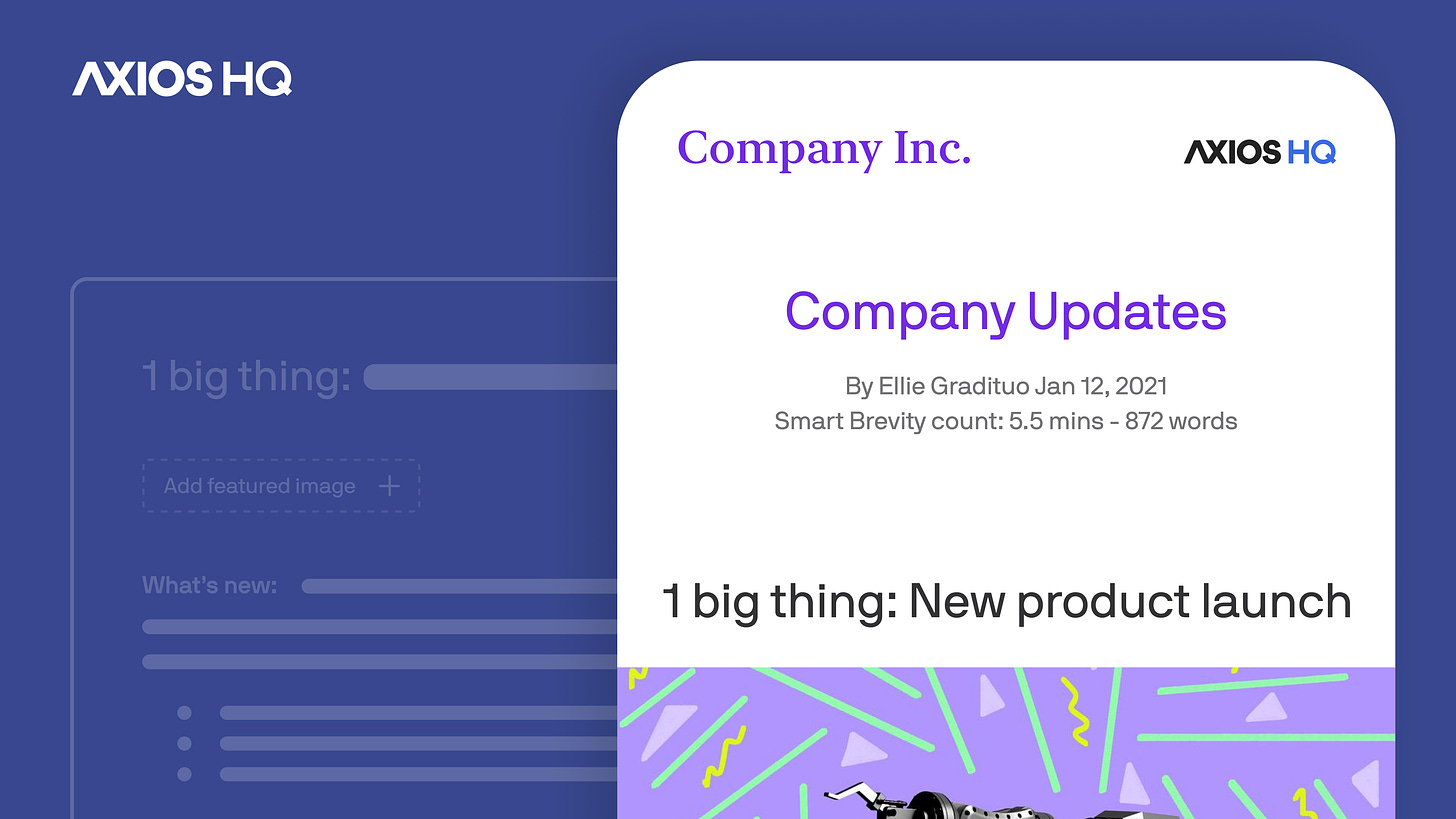Most of the news published by internal communications is corporate/organizational info—a new product, a marketing campaign, info on a senior hire, the announcement of a major milestone achieved, org notes from leadership, and so on.
This kind of content is sufficient to keep your employees informed, but it’s not enough to keep them engaged, not enough to get them actually interested in the company, products, services, role in the community, their peers—to get them emotionally vested in your organization.
suf·fi·cient (sə-fĭsh’ənt): adj.Being as much as is needed; adequate.
Employees who are already engaged will eat up the corporate news. Those who are motivated to climb a ladder or to have some influence within the company will stay on top of who’s who and what’s what.
The harsh reality is that corporate news is often the least popular content because it’s boring, old news, perceived as company propaganda, or all of the above. Even more, company news can feel disconnected from (or tone-deaf to) what’s happening outside the office.
How do you get employees engaged in company news?
Keep it real: Internal comms must report on real people doing real work that has perceived and actual value, and do it in a way that is inclusive and doesn’t ignore what’s happening outside the company’s walls.
Most employees are disengaged.
A Gallup poll released earlier this year showed that just 36% of employees are engaged with the company. This 36% are motivated and enthusiastic about their job and workplace.
36%, however low that number seems, is actually the highest engagement rate since Gallup’s studies began in 2000.
51% of employees are psychologically detached from the company. These employees are ho-hum about the org and guess what: this 51% are actively looking for other jobs.
15% of employees are actively disengaged, which means they’re totally unhappy. This 15% is spreading their miserableness around to teammates and on their social networks.
Interesting to note: Around the time of the murder of George Floyd last year, engagement dropped to 31%, an indication that employees were distracted by “bigger ideas.”
One way to increase and retain employee engagement—to move that 36% to 45, 50, 55%—is to create content that touches on the “bigger ideas” that affect the lives of employees outside of work.
That doesn’t mean that every intranet story or executive video needs to address racial injustice or climate change or gun violence or cultural topic du jour.
It means that some stories should indirectly address hot issues by subtly weaving in your organization’s values. You’ll succeed most when the message isn’t blatant or explicit.
ad
3 organizations share their internal news
Fortune 100s and startups alike are elevating their comms with Axios HQ — intuitive software that helps teams tell their stories more effectively.
Among them:
JPMorgan Chase, sharing its economic recovery plan
GLG, touting its team's nonprofit work
Utah State, sharing news across its business school
Editor’s note: I’m a big fan of Axios HQ’s use of Smart Brevity®, which I saw firsthand as a pilot partner during my tenure at BlackRock.
The emerging trend in internal comms storytelling is around values.
Value storytelling is running on two complementary tracks.
D&I storytelling means engaging employee populations that are generally underrepresented in society and in the workplace. I often speak with internal comms storytellers and time and again they talk about D&I as an extra dimension in their editorial assignments.
Once they settle on a story to tell—a new product or a major sales milestone, for example—IC storytellers work extra hard to ensure that a diversity of voices and experiences are expressed in the article.
This inclusive effort isn’t limited to obvious diversity categories, like Latinx or LGBTQ; it reaches other levels, like making sure those with invisible disabilities are featured or, like they’re doing at IKEA, ensuring that the many cultures that represent the employee base show up in internal news articles.
Storytelling around corporate values means talking about what the company stands for, as these examples from Apple and Spotify illustrate:
Keep reading with a 7-day free trial
Subscribe to Mister Editorial to keep reading this post and get 7 days of free access to the full post archives.





